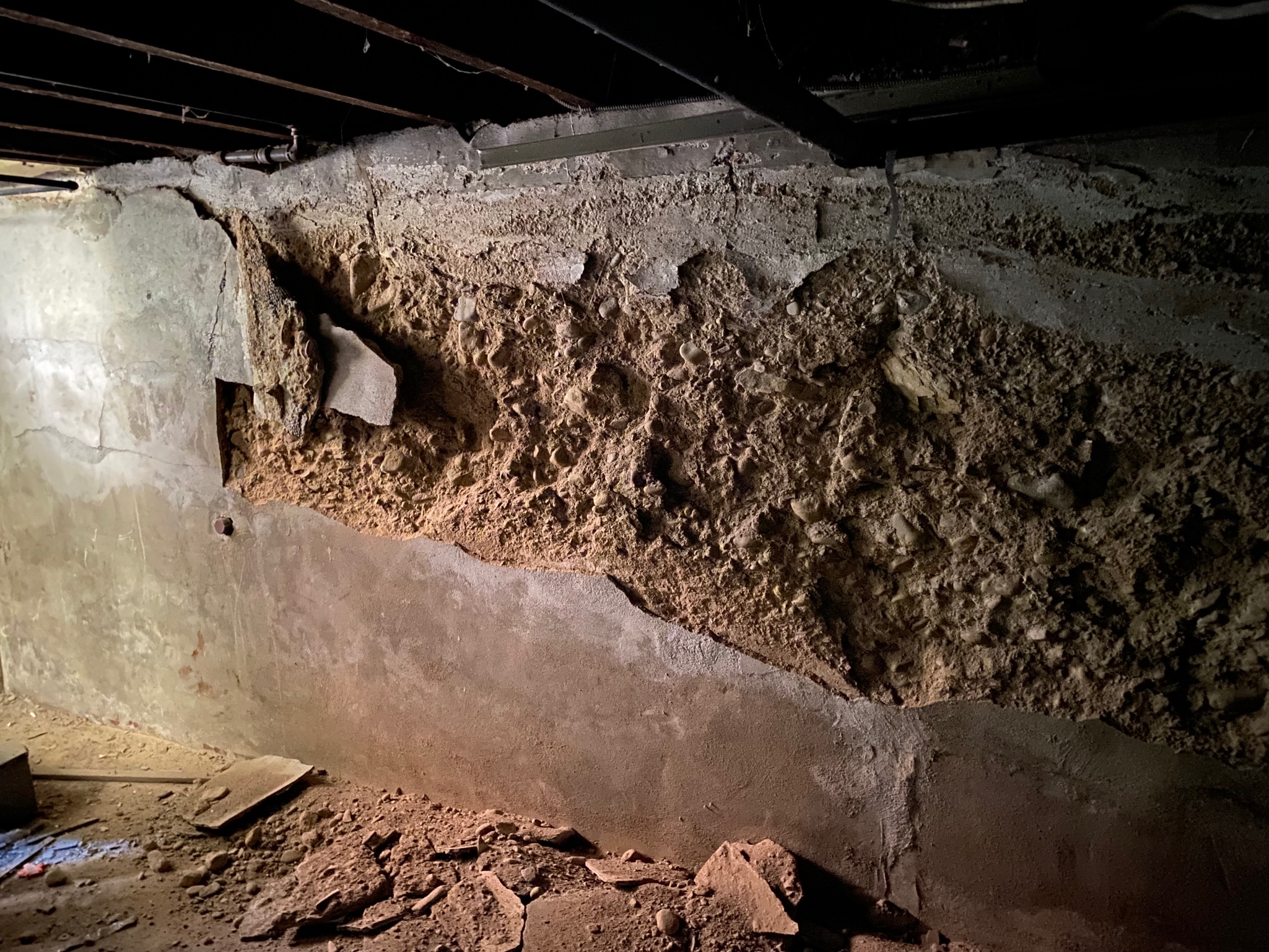
When you think about foundation damage, dramatic causes like earthquakes or massive floods might come to mind. But in reality, one of the most common and underestimated threats is lurking right outside your door: poor drainage.
Water is a powerful force. Without a proper drainage system, water from rain, snowmelt, or irrigation can accumulate around your home’s foundation. Over time, this excess moisture can weaken the soil supporting your foundation, leading to settlement, cracks, and even total structural failure.
Understanding the relationship between drainage and foundation health is crucial for homeowners who want to protect their most valuable investment. In this article, we’ll break down how poor drainage damages foundations, signs your drainage system may be failing, and the best solutions to keep your home safe and dry.
🔑 Key Takeaways
- Poor drainage causes soil erosion, hydrostatic pressure, and foundation settlement.
- Signs include pooling water, wet basements, cracks, and uneven floors.
- Solutions include regrading, downspout extensions, French drains, and sump pump systems.
- Early intervention prevents costly foundation repairs.
- A professional assessment can identify hidden drainage problems before they escalate.
How Poor Drainage Affects Your Foundation
Water is meant to be directed away from your home. When drainage systems fail or are poorly designed, water accumulates around the foundation, leading to several serious issues.
Soil Saturation and Erosion
When the soil around your foundation becomes saturated, it loses its strength and load-bearing capacity. Over time, this can cause:
- Settlement: Portions of the foundation sink unevenly.
- Void formation: Eroded soil leaves gaps under the foundation footings, causing cracking and shifting.
Hydrostatic Pressure
Saturated soil creates outward and upward pressure against foundation walls. This force, known as hydrostatic pressure, can:
- Push water through cracks or joints in basement walls.
- Cause horizontal cracks and bowing walls.
- Increase the likelihood of basement flooding.
Frost Heave
In colder climates, water-laden soil freezes and expands during winter. This expansion pushes against the foundation and can cause lifting and cracking. When the ground thaws, it settles unevenly, leading to further structural movement.
Signs Your Drainage System is Failing
Catching drainage problems early is key to preventing major foundation damage. Here are the most common warning signs:
| Sign | What It Means |
|---|---|
| Pooling water near foundation | Improper grading or failing gutter system. |
| Wet or damp basement walls | Water is seeping through cracks or joints. |
| Efflorescence on walls | Mineral deposits left by evaporating water. |
| Mold or musty odors | Persistent moisture issue behind walls. |
| Cracks in foundation walls | Soil movement or hydrostatic pressure stress. |
| Uneven or sloping floors | Differential settlement due to soil washout. |
| Peeling paint or rust on walls | Chronic interior moisture intrusion. |
If you notice one or more of these, it’s time to inspect your drainage system and foundation.
Common Causes of Poor Drainage
Improper Grading
Your yard should slope away from the foundation to direct water naturally downhill. If the slope points toward your home, rain and runoff will pool against the foundation walls.
Short or Broken Downspouts
Downspouts should discharge water at least 6 to 10 feet from your home. Broken or too-short downspouts allow water to accumulate right at the base of your foundation.
Clogged or Damaged Gutters
When gutters are clogged with leaves and debris, water overflows directly next to the foundation rather than being directed safely away.
Ineffective or Missing Drainage Systems
Older homes often lack proper perimeter drains (French drains) or sump pump systems. Without these, groundwater has a direct path to your basement or crawlspace.
Landscape Design
Poorly placed flower beds, retaining walls, or patios can trap water near your foundation if not properly graded or drained.
Solutions to Protect Your Foundation
1. Regrade Your Yard
Adjusting the slope around your home ensures water flows away from the foundation. Generally, the soil should drop at least 6 inches within the first 10 feet.
2. Extend Downspouts
Add extensions or buried drainage pipes to carry water far away from the foundation, preventing pooling near the walls.
3. Install or Upgrade French Drains
A French drain is a gravel-filled trench containing a perforated pipe that redirects surface and groundwater away from the foundation.
Benefits:
- Reduces hydrostatic pressure.
- Helps prevent basement flooding.
- Long-term solution for water-prone areas.
4. Maintain and Upgrade Gutters
Regularly clean gutters to prevent clogs. Consider installing larger gutters or gutter guards to handle heavy rainfall more effectively.
5. Install a Sump Pump System
A sump pump collects water from under the basement floor and expels it away from the home. Adding a battery backup system ensures protection even during power outages.
6. Landscape Strategically
- Avoid planting water-thirsty trees or shrubs too close to the foundation.
- Use mulch and native plants to absorb excess water.
- Install swales or shallow ditches to guide runoff away.
Real-Life Example: Saving a Foundation with Drainage Improvements
A homeowner in Salem, VA, noticed damp spots in their basement after heavy rains. Over time, cracks began forming in the foundation walls, and the basement developed a persistent musty odor.
A Seal-Tite inspection revealed the downspouts discharged directly beside the foundation, and the yard grading sloped toward the home. The solution included:
- Extending downspouts 10 feet away from the house.
- Installing a French drain along the problem side.
- Regrading the yard to improve runoff flow.
- Installing a sump pump system with battery backup.
After these changes, water intrusion stopped completely, the cracks stabilized, and the homeowner avoided a potential full foundation underpinning project that would have cost tens of thousands of dollars.
Why Early Action Matters
Delaying drainage improvements can have severe consequences:
Escalating Structural Damage
As water continues to saturate the soil, the foundation loses support, resulting in larger and more costly structural issues.
Increased Repair Costs
A simple grading fix or gutter extension costs a fraction of the price of foundation underpinning, wall anchoring, or slab replacement later on.
Health Hazards
Persistent moisture encourages mold growth, affecting indoor air quality and family health.
Lower Property Value
Foundation issues significantly reduce a home’s market value and complicate future sales.
FAQs: Drainage and Foundation Health
Can I fix drainage issues myself?
Simple fixes like extending downspouts or adding splash blocks can be DIY. However, larger projects like grading, French drains, or sump pump installations should be handled by professionals to ensure proper design and function.
Will fixing drainage solve existing cracks?
Improving drainage prevents further movement but does not repair existing structural damage. Cracks may still need to be sealed or reinforced.
How often should gutters be cleaned?
At least twice a year — typically in spring and fall. More often if your home is surrounded by trees.
Is a sump pump necessary for all homes?
Not always. Homes in areas with high water tables or frequent heavy rains benefit most. A professional assessment can determine if one is needed.
Can landscaping cause drainage problems?
Yes. Improperly placed flower beds, patios, or retaining walls can direct water toward your foundation rather than away.
Conclusion: Protect Your Foundation from the Top Down
While water is essential for your garden and lawn, it’s one of the biggest enemies of your foundation when left uncontrolled. Poor drainage systems create a perfect storm of soil saturation, erosion, and hydrostatic pressure — all working together to undermine your home’s stability.
The good news? Simple proactive measures like improving grading, extending downspouts, and installing effective drainage systems can make a dramatic difference.
If you’re noticing pooling water, basement leaks, or new foundation cracks, don’t wait. Contact Seal-Tite Basement Waterproofing for a professional inspection and drainage assessment. Our team specializes in designing comprehensive solutions that protect your foundation today and for decades to come.
A dry, stable foundation starts with proper drainage — and peace of mind starts with a single call.

Seal-tite Basement Waterproofing Co. is a full service basement environment contractor. We carry an A+ Better Business Bureau rating. We repaired over 40,000 homes and structures in Virginia, West Virginia, Tennessee, and North Carolina. We are fully insured and licensed. We have worked in all types of locations, including residential and commercial locations, government agencies, colleges, hospitals, churches, and condo associations.
Seal-tite® offers a lifetime transferable warranty. We carry a Class A Contractor’s License and we are fully insured. Our satisfied customers range from government agencies to businesses, hospitals, colleges, churches, and thousands of homeowners. Your home is probably the single largest investment you will make in your lifetime. Don’t wait, call Seal-tite® to help make your home dry, safe and livable.

